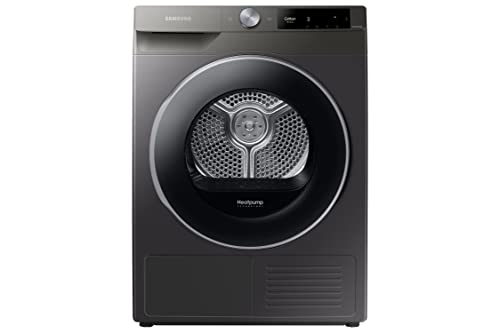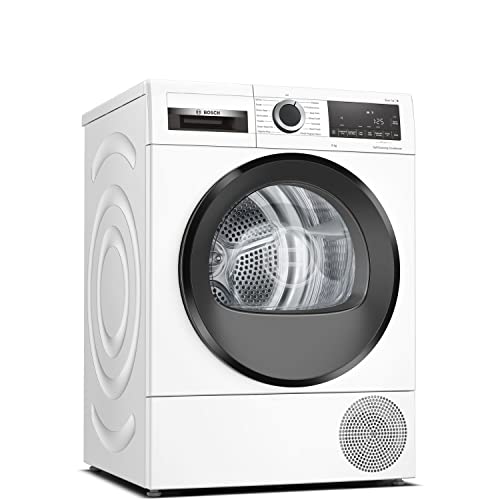9 . What Your Parents Taught You About Washer Dryer With Heat Pump
페이지 정보
작성자 Ricky O'Brien 작성일24-06-03 18:32 조회611회 댓글0건관련링크
본문
 Heat Pump Washer Dryer - A Revolution in All-In-One washer dryer With heat pump-Dryer
Heat Pump Washer Dryer - A Revolution in All-In-One washer dryer With heat pump-DryerA revolution in all-in-one washer-dryers is advancing. We've tested 2 large, efficient heat pump combo units that wash and dry in less than two hours and require an outlet of 120 volts.
 Heat pump combos cool down the air to get rid of moisture unlike traditional dryers that blow hot air over tumbled laundry. They use less energy, on average as compared to other dryers.
Heat pump combos cool down the air to get rid of moisture unlike traditional dryers that blow hot air over tumbled laundry. They use less energy, on average as compared to other dryers.What is a What is a Pump Dryer?
Heat pump or ductless drying systems cool the air inside and trap moisture. This is unlike standard electric dryers, which are heated by gas or electric resistance, and then blow out the warm, humid air through a vent which must be vented outside. They don't have to vent to the exterior because they recycle the heat and moisture inside the dryer.
These dryers are also energy efficient, which means you'll save money on your electricity bills. They are also cheaper to operate than conventional dryers and last twice as long. They are also green, a major selling point for a majority of consumers.
The heat pump dryers that are ENERGY STAR-certified are designed to provide the best performance and efficiency. They have a variety of features that make them stand out from ordinary dryers, including moisture sensors that prevent over drying and prevent clothes from shrinking or fading, smart settings that let you customize your laundry routine, and remote control via smartphone.
In addition to their efficiency and affordability They are also safer than conventional dryers because they do not have vents for dryers. This means that there is no chance of lint accumulation in the vent, as well as fires. Additionally, since they're ventless, heat pump dryers can be used anywhere in your home and are the ideal option for those living in apartments.
Another advantage of heat pump dryers is that they use a much lower temperature than conventional dryers, which helps your clothes keep their color and shape for longer. This could mean that it takes longer to dry your clothing.
Heat pump dryers are also simpler to install since they don't require a vent. They can be installed in any space of your house provided that there is access to a water drain. They are also quieter and environmentally friendly than traditional dryers. They are an excellent choice for homes with pets or small children.
Heat pump dryers are becoming more popular in the United States, but they have been a popular choice in Europe for several decades. It's not a surprise that increasing numbers of homeowners decide to buy a washer dryer equipped with a heat pump due to their incredible energy efficiency.
What are the advantages of a dryer that uses a heat pump?
They consume around half the energy of conventional vented dryers. This means they are highly energy-efficient and help lower the cost of electricity for homes.
As their name suggests, heat pump dryers do more than provide your clothes with hot air. They also eliminate the humidity from them by drawing in dry, ambient air and then reusing the same air throughout the drying process. This keeps your clothes fresh and prevents wrinkles, as well as reducing the amount of moisture that builds up in your home.
Also, they can help reduce the burden on your air conditioner, and thus reduce your energy bills. This is a huge benefit for those who reside in humid regions and frequently use dryers.
The heat pump dryers take the moisture from your laundry by using the process of evaporative cooling, in contrast to traditional vented dryers which release warm, moist air into the atmosphere. This creates a dehumidified, cooler environment for Washer Dryer With Heat Pump your laundry. It is an ideal option for homes without the space or budget for an extra duct to expel humid air.
Since they don't have to heat their clothes using conventional heating elements like a vented dryer A heat pump dryer can run at lower temperatures and is gentle on clothes. Some heat pump dryers never attain their maximum temperature, which helps keep your clothes in good shape and secure for longer.
The dryers with heat pumps are more expensive initially, but they can save you a significant amount of energy and money in the long in the long. They are a great option for those looking to reduce their environmental impact while also reducing their utility costs.
In recent years, heat pump dryers have gained popularity more than ever. Manufacturers have also managed to make them more affordable. The technology behind these machines continues to improve and make them more user-friendly and efficient. These dryers are a great investment that will reduce energy consumption and help the environment over the long-term.
How do heat pump dryers function?
When it is time to wash your clothes the typical vented dryer is a simple piece of machinery. A sheet of metal with a heater, motor and timer, as well as a fan. But a heat pump dryer is a totally different creature. These dryers are stuffed with a myriad of advanced technologies that allow them to have their energy efficiency and price tag.
They are efficient because they don't just dry your clothes however, they also recycle the heat of the air back into your clothing. The process starts with a blower that spits air through fins on the cold side of the dryer and then through fins on the hot side. It may sound counterintuitive however, why do you need to spend electricity cooling the air and then reheating it? It's an excellent way to conserve energy.
The system reverses the cycle to heat up the lint. The clothes are dried in the same time as with vented dryers, but at a cost that is lower.
Heat pump dryers are also beneficial because they don't require vents. They can be installed in any room of the home or apartment even in small spaces such as closets, bathrooms, and bedrooms. They are more flexible than a combination washer/dryer since they do not require an exterior wall for ventilation.
They do not require a vent but they must drain. This is done through the built-in catch drawer, which can hold water for up to two cycles or by connecting the unit to a hose, and then directing it through a window. This is a minor issue in comparison to traditional dryers, which require the cleaning of lint screens each cycle and condensation coils to be defrosted manually at minimum once or twice per month.
In the moment, heat pump dryers are a little more expensive than conventional counterparts, but the initial cost will be paid back through lower utility bills. In addition, a lot of states and local utilities offer rebates and incentives to help lessen the burden of purchasing expenses.
How can a heating dryer save energy?
A heat pump dryer recycles its energy, as its name implies. In actual fact, it consumes much less energy than traditional electric dryers most households utilize. The primary reason is that the dryer doesn't directly heat the air. It utilizes the same technology that is used in air conditioning: compressing liquid (like refrigerant) and then heating the resultant vapour. The vapor is then circulated through the drum of the dryer which absorbs it and assists in drying your clothes.
The heat pump's secondary role is to re-use heated vapors that flow back through the drum after it has been dried. This is referred to as an reversible process. The heat pump repeats this process many times, recapturing heat. The hot air produced is then released into the building to warm up the building's inhabitants.
Ventless heat pump dryers unlike vented dryers push the moisture-laden indoor air through a closed circuit that cools it, sucks out the water, and then is drained into a washer drain pipe or into a floor drain or sink. This lets you skip the dryer vent entirely and aids in keeping indoor humidity at a minimum particularly in a sealed building enclosure.
A heat pump dryer may also be used with an electric evaporator that adds hot water to the cooling loop whenever required. This can cut down on energy consumption by up to 30%..
It is important to know that heat pump dryers may not be suitable for all households. The initial cost of heat pump dryers is more than that of traditional electric dryers. However the operating savings for most families aren't as great. Yale Appliance estimates these units are a good choice for households with high electricity costs and a high use of clothes drying.
That said, there is a major reason for many households to consider a heat pump clothes dryer: government policy. In the United States, you can get rebates that drastically lower the cost of these appliances. As a result, the economics of this new laundry device is compelling.
댓글목록
등록된 댓글이 없습니다.



